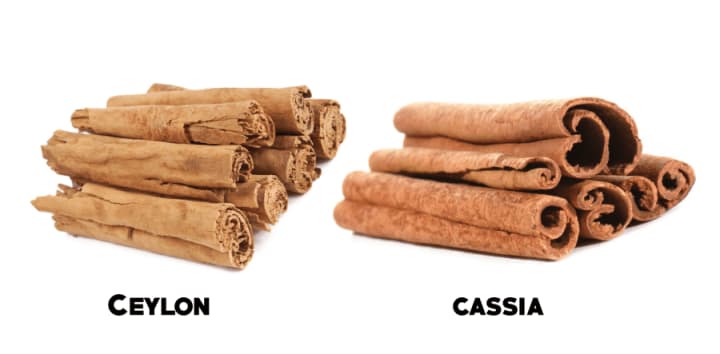A Spice For Lifes Variety
A look into the United States second most popular spice, cinnamon.

Who doesn’t love the smell of Grandmas’ freshly baked cinnamon rolls or the aroma of apple spiced candles around the holidays? Or the taste of an ice cold creamy horchata on a hot day with a nice meal including a sweet churro for desert. The commonly used and well known spice derived from the cassia trees bark often referred to as cinnamon is used for a variety of different things. Claimed to be one of the most important spices to the human diet that is not only used in cooking as flavor or as an additive for scent, it also reaps many different surprising health benefits as well.
About Cinnamon
True cinnamon, refered to as the genus cinnamomum verum or ceylon is derived from the inner bark of the tree. The origins of cinnamon are Sri Lanka, China, and India. Of the other genus of cinnamon called the cassia tree, which comes from Indonesia and Asia. Cassia has a stronger scented bark and cinnamon is most commonly sold for less in the grocery stores. Commonly sold as what you see as ground cinnamon. Still they both have positive benefits for our health.

What is Cinnamon
The Cassia tree not only has the bark but also bears a sweet fruit called Cinnamon fruit from has been traditionally and commonly used in the baking of different dishes, cuisines, snacks and deserts for millennia around the world. Seen as a “prized” cooking spice making so that it’s original origins and species also have a rich history behind it.

The root of the word cinnamon comes from a Greek word meaning sweet wood. As it's bark is well known for its sweetly scented fragrance and flavor. It was commonly used in medicine practices and cooking by dating back to 2000 BC by the Egyptians and the Chinese dating back to thousands of years ago. not only did the Egyptians use it in the preservation of mummified humans but it also used to be popular for the usage of the preservation of meats as well. Once a popularily traded commodity by the Arabs and less commoly available and expensive to transport it later on became easier and more commonly sold.
Not only is cinnamon modernly used as a cooking spice and in the preparation of products such as face creams, perfumes , lotions and candle making etc. It also has scientifically proven therapeutical properties making it a traditional and complementary medicine. It is an antioxidant, antibacterial/ strong antiseptic, heart stimulant, as well as an anti-inflamatory.These properties give it the ability to be used botanically, chemically , and pharmacutically.
Being rich in a number of essential minerals and vitamins needed for the proper function of the body such as calcium, iron, magnesium, zinc, chromium, fiber, sodium, potassium, phosphorus, and vitamin A, it is benificial to take every day. In recommended doses of 1-6 grams daily but exceeding more, like taking tol much of anything, renders toxic.
According to the U.S. Department of Agriculture, a teaspoon of ground cinnamon weighing 2.6 g contains:
energy: 6.42 calories
carbohydrates: 2.1 g
calcium: 26.1 milligrams (mg)
iron: 0.21 mg
magnesium: 1.56 mg
phosphorus: 1.66 mg
potassium: 11.2 mg
vitamin A: 0.39 micrograms
It also contains traces of vitamins B and K and the antioxidants choline, beta-carotene, alpha-carotene, beta-cryptoxanthin, lycopene, lutein, and zeaxanthin.
Antioxidants can reduce oxidative stress and may help prevent cancer, type 2 diabetes, and many other conditions.
In recent studies it has been shown to aid in the curing, treatment, and prevention of certain diseases and illnesses such as type 2 diabetes, HIV, multiple sclerosis, chronic wounds, bronchitis, cardio vascular disease, alzheimers , chronic indigestion including bloating and diarrhea, and certain types of cancers by the inhibiting of cancer cell growth.
Taking cinnamon daily with a healthy exercise routine, as well as with the combination of other fluids, including a warm glass of milk daily can aid in weight loss as well as a healthier libido. Having an effect on blood glucose levels and also a reduction of the bad effects of high fattening foods it aids in weight loss. Although took directly alone would not necessarily make in lose weight it increases the metabolism which can help maintain or achieve a healthier weight.
http://www.ambitiouskitchen.com/best-cinnamon-rolls/
https://www.ambitiouskitchen.com/best-cinnamon-rolls/






Comments
There are no comments for this story
Be the first to respond and start the conversation.